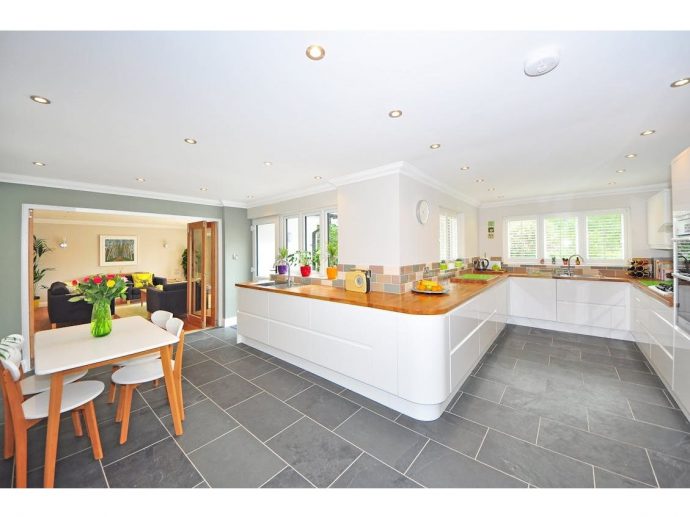Categories more
- Adventures (17)
- Arts / Collectables (15)
- Automotive (37)
- Aviation (11)
- Bath, Body, & Health (77)
- Children (6)
- Cigars / Spirits (32)
- Cuisine (16)
- Design/Architecture (22)
- Electronics (13)
- Entertainment (4)
- Event Planning (5)
- Fashion (46)
- Finance (9)
- Gifts / Misc (6)
- Home Decor (45)
- Jewelry (41)
- Pets (3)
- Philanthropy (1)
- Real Estate (16)
- Services (23)
- Sports / Golf (14)
- Vacation / Travel (60)
- Watches / Pens (15)
- Wines / Vines (24)
- Yachting / Boating (17)
Creating Visual Flow: Using Tiles to Connect Different Areas of Your Home
Published
05/19/2024Tiles are not just functional elements in a home; they can also serve as powerful design tools to create visual continuity and flow between different areas. By carefully selecting and coordinating tile designs, colors, and patterns, homeowners can seamlessly connect various spaces, enhancing the overall decor and ambiance of their home. Let's explore how to use tiles effectively to achieve visual flow throughout your living space.
Choosing Consistent Tile Styles
Consistency is key when using tiles to connect different areas of your home. Start by selecting tile styles that are consistent in material, size, and finish to create a cohesive look from one room to another. Whether you prefer sleek and modern porcelain tiles, classic ceramic tiles, or options available from Hyperion Tiles, maintaining consistency in tile styles helps establish a unified design theme that ties the entire home together.
Selecting Coordinating Colors
In addition to consistent tile styles, coordinating colors play a crucial role in creating visual flow between different areas of the home. Choose tile colors that complement each other and harmonize with the overall color palette of your home's decor. This doesn't mean you have to use the exact same color in every room; instead, opt for colors that are in the same color family or share similar undertones to create a seamless transition from one space to the next.
Creating Transitional Zones
Transitional zones, such as hallways, entryways, and open-concept living areas, provide excellent opportunities to use tiles to create visual flow between different areas of the home. Consider using the same or similar tiles in these transitional zones to establish a sense of continuity and connection between adjacent spaces. This approach helps blur the boundaries between rooms, creating a cohesive and integrated living environment.
Using Patterns to Guide the Eye
Tile patterns can be used strategically to guide the eye and create a sense of movement and flow throughout the home. Consider using linear patterns, such as stripes or chevrons, to visually connect different areas and lead the eye from one space to another. Alternatively, geometric patterns, such as hexagons or arabesques, can add visual interest and dynamism while maintaining a cohesive design theme.
Extending Tiles from Indoor to Outdoor Spaces
For homes with outdoor living areas, extending tiles from indoor spaces to outdoor areas can further enhance visual flow and continuity. Choose outdoor tiles that complement the style and color of your indoor tiles to create a seamless transition between indoor and outdoor living spaces. This approach blurs the boundaries between the interior and exterior of the home, creating a unified and cohesive design scheme that enhances the overall flow of the living environment.
Using Accent Tiles to Create Focal Points
Accent tiles can be used strategically to create focal points and visual interest in different areas of the home. Consider using accent tiles in high-traffic areas, such as entryways or kitchen backsplashes, to draw attention and create a sense of drama. Whether incorporating bold colors, intricate patterns, or textured surfaces, accent tiles add depth and personality to the space while reinforcing the overall design theme and enhancing visual flow.
Balancing Consistency and Variety
While consistency is essential for creating visual flow between different areas of the home, it's also essential to balance consistency with variety to avoid monotony. Introduce subtle variations in tile colors, textures, or patterns to add visual interest and depth without disrupting the overall flow of the design. This approach creates a dynamic and engaging living environment that feels cohesive yet visually stimulating.
Enhancing Visual Flow with Tiles
In conclusion, tiles can be powerful tools for creating visual flow and continuity between different areas of your home. By choosing consistent tile styles, coordinating colors, creating transitional zones, using patterns strategically, extending tiles from indoor to outdoor spaces, incorporating accent tiles, and balancing consistency with variety, homeowners can achieve a cohesive and harmonious living environment that enhances the overall decor and ambiance of their home. With careful planning and attention to detail, tiles can transform ordinary spaces into visually stunning and seamlessly connected living areas that reflect your personal style and create a sense of unity and harmony throughout the home.















